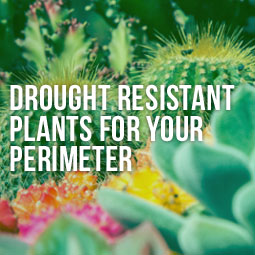 Installing artificial grass to replace your water-guzzling live lawn is a smart start toward creating a water-wise landscape. What’s next? Adding drought-resistant plants to adorn the perimeter of that lush, green expanse of faux grass. Here in the South Bay Area, we are so lucky. We can choose from a wealth of drought-resistant trees, shrubs, and perennials that are perfectly suited for our yards.
Installing artificial grass to replace your water-guzzling live lawn is a smart start toward creating a water-wise landscape. What’s next? Adding drought-resistant plants to adorn the perimeter of that lush, green expanse of faux grass. Here in the South Bay Area, we are so lucky. We can choose from a wealth of drought-resistant trees, shrubs, and perennials that are perfectly suited for our yards.
Some people still think drought-resistant means “wild and weedy.” Boy, are they wrong! Native plants and those native to similar climates elsewhere in the world can transform your landscape with color and texture. All with little or no water. You can group these plants or feature them as focal points, just as you might do with their thirstier cousins. So your garden can have whatever look and feel you want. See what and where you can grow for a drought tolerant landscape below:
What can you grow?
Plants that attract butterflies, hummers and other birds, and bees essential for pollination. Plants that provide shade. Or hold their visual interest well into winter. Consider succulents, too, because they come in colors and shapes unlike other plants. With hundreds of options, your biggest challenge will be choosing. You may be surprised to find that some of your current favorites are, in fact, drought-resistant. So are many of the plants you probably use in your patio herb garden.
Native plants are ideal, because they obviously thrive in our climate. You don’t have to go out and dig them up – nor should you! There are local nurseries that specialize in native and/or drought-tolerant plants.
If you haven’t visited the San Jose Water Company water-wise website yet, just a glimpse of the gorgeous sky blue ceanothus on their home page will make you want one to grace the perimeter of your artificial grass. After all, it is California’s own native lilac. The site offers lots of drought-resistant garden design ideas, sustainable gardening tips, and a searchable database of plant possibilities complete with photos. Not sure which plants to put together? The site has a gallery of garden photos, too.
But seeing plants in real, live environments can help you learn what various options look like up close and envision how they might coordinate nicely in your own landscape. Guadalupe River Park and Gardens has planted a series of mock front yards similar in configuration to typical Santa Clara Valley homes, to help educate and inspire you.
Right plant, right place
Water aside, different plants thrive in different growing conditions. So before you start making your plant list, observe your space. Is it sunny, partly sunny, always in the shade? Is it wide open and flat, narrow, near a fence? Group plants with similar preferences, and choose varieties that match your personal preferences and design goals, based on:
- Plant heights
- Leaf size, shape and color
- Flower color and bloom time
- Evergreen or not
Have your heart set on a few plants that simply don’t pass the drought-resistant test? Tuck those flowering annuals and perennials into your veggie container gardens. It’s a lot easier to control water usage with containers.
Hold the water
Drought-resistant plants really do need less water, or none at all once they are established. So even though the soil surface is dry, don’t assume you should give them a drink. You will not only waste precious water, you’ll be doing your plants a critical disservice – overwatering native and drought-tolerant varieties can actually cause them to decline and die.
To keep the soil from drying out (and keep you from the temptation to overwater) use an organic mulch. Or, better yet, plant drought-resistant groundcovers.












